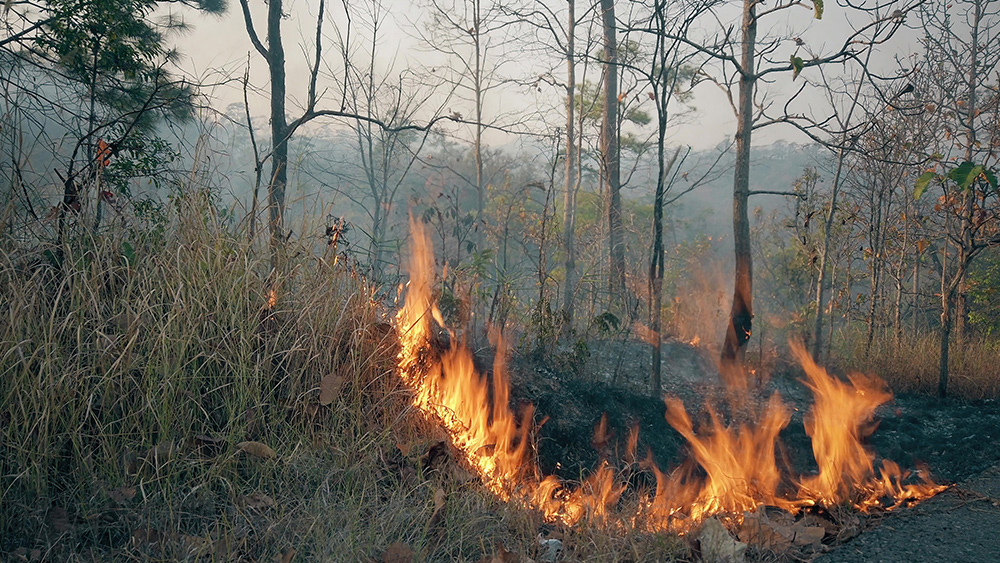 Parler
Parler Gab
Gab
- Wildfire smoke significantly increases the risk of premature birth.
- Pregnant women are a uniquely vulnerable group to this danger.
- Exposure during mid-pregnancy interferes with crucial placental development.
- The risk is most severe in the Western United States.
- This research underscores an urgent public health crisis demanding action.
Critical windows of vulnerability
The research uncovered distinct patterns of risk throughout pregnancy. During mid-pregnancy, exposure to any level of wildfire smoke was associated with elevated preterm birth risk, with that risk peaking around the 21st week of gestation. This period represents a crucial phase of placental development, making it particularly vulnerable to environmental toxins. In late pregnancy, the danger shifted to high-concentration smoke events. The study found elevated risk was most closely associated with exposure to wildfire PM2.5 levels above 10 micrograms per cubic meter during these later stages. "The second trimester is a period of pregnancy with the richest and most intense growth of the placenta, which itself is such an important part of fetal health, growth and development," said co-author Dr. Catherine Karr, a UW professor of environmental and occupational health sciences and pediatrics. "So it may be that the wildfire smoke particles are really interfering with placental health."Regional disparities
The connection between wildfire smoke and preterm birth was strongest and most precise in the Western U.S., where populations experience the highest concentrations of wildfire PM2.5 and the greatest number of high-intensity smoke days. In this region, the odds of preterm birth increased with each additional microgram per cubic meter of average wildfire PM2.5 exposure. Regional differences may stem from variations in smoke composition, housing quality, and the age of the smoke particles. Western wildfires typically generate fresher smoke from nearby fires, while other regions often experience aged smoke that has traveled long distances, potentially changing in toxicity during transport.Raising awareness
The evidence is now compelling enough to demand immediate public health action. Researchers suggest that current public health messaging about wildfire smoke should be specifically tailored to pregnant women, highlighting them as a particularly vulnerable group. "There are a couple of avenues for change," Sherris said. "First, people already get a lot of public health messaging and information throughout pregnancy, so there's an opportunity to work with clinicians to provide tools for pregnant people to protect themselves during smoke events." The study adds to growing evidence that wildfire smoke may be more toxic than ambient air pollution from other sources. Previous research has suggested that the unique chemical composition of wildfire particles may cause greater inflammation and tissue damage than equivalent amounts of regular air pollution. As climate patterns shift and wildfire seasons intensify across North America, the implications for maternal and infant health become increasingly urgent. This research underscores the tangible human cost of environmental policies that fail to address the root causes of increasing wildfire activity while neglecting to protect vulnerable populations from their consequences. For families hoping to bring healthy children into the world, the quality of the air they breathe may be as important as the food they eat or the water they drink. Sources for this article include: MedicalXpress.com TheLancet.com Reuters.comNeuralink and the ethical frontier of merging mind and machine
By Willow Tohi // Share
EU faces roadblock as Belgium refuses to seize frozen Russian assets for Ukraine
By Kevin Hughes // Share
Butylated hydroxytoluene (BHT): A synthetic food preservative with hidden dangers
By Laura Harris // Share
The acid reflux paradox: Why suppressing stomach acid may harm your health
By Willow Tohi // Share
China’s race against time: The quest to extend human lifespan to 150 years
By Belle Carter // Share
New global study finds green spaces drastically reduce mental health hospitalizations
By Ava Grace // Share
Governments continue to obscure COVID-19 vaccine data amid rising concerns over excess deaths
By patricklewis // Share
Tech giant Microsoft backs EXTINCTION with its support of carbon capture programs
By ramontomeydw // Share
Germany to resume arms exports to Israel despite repeated ceasefire violations
By isabelle // Share










